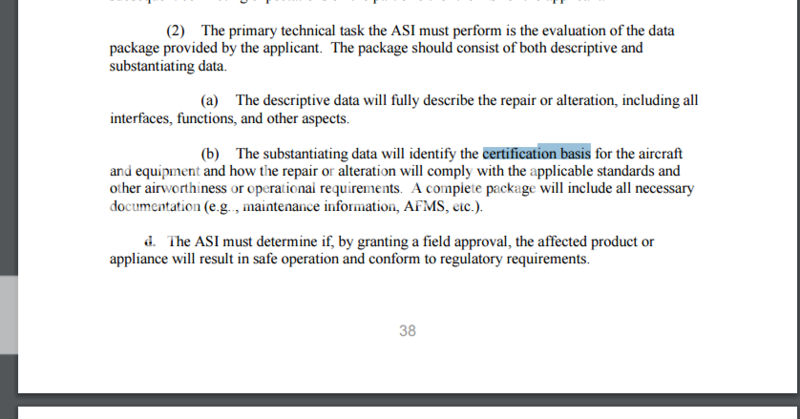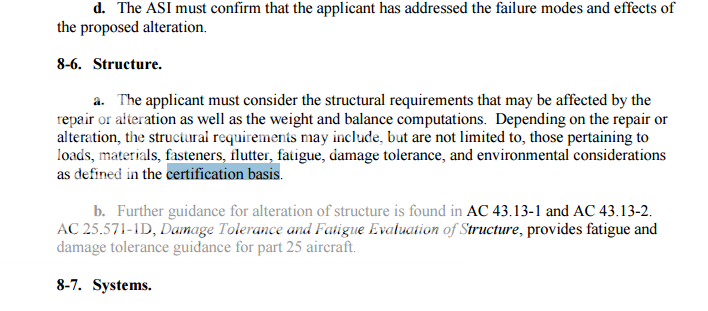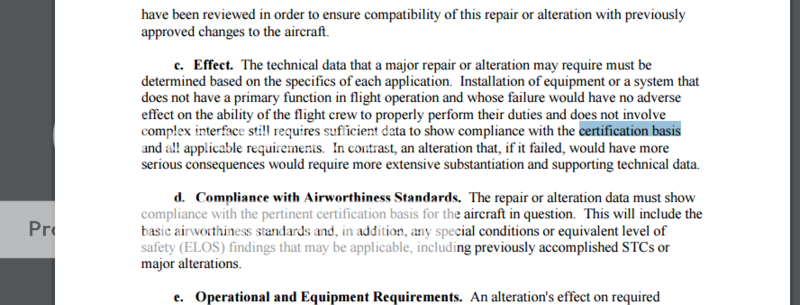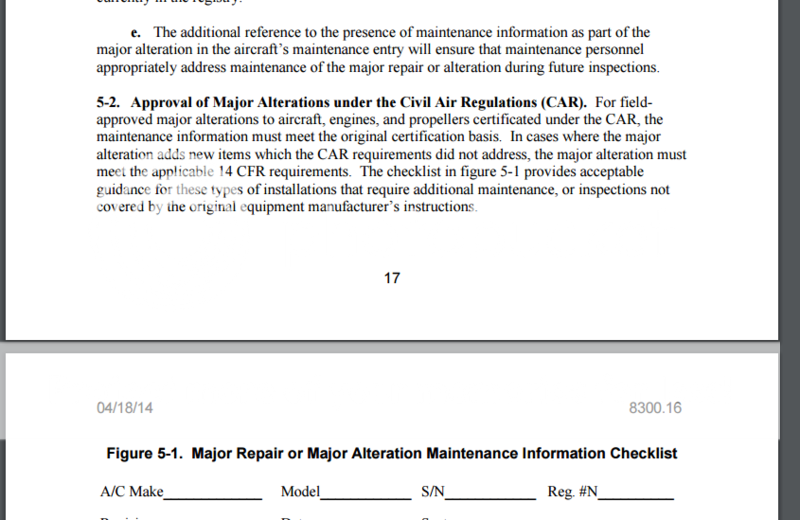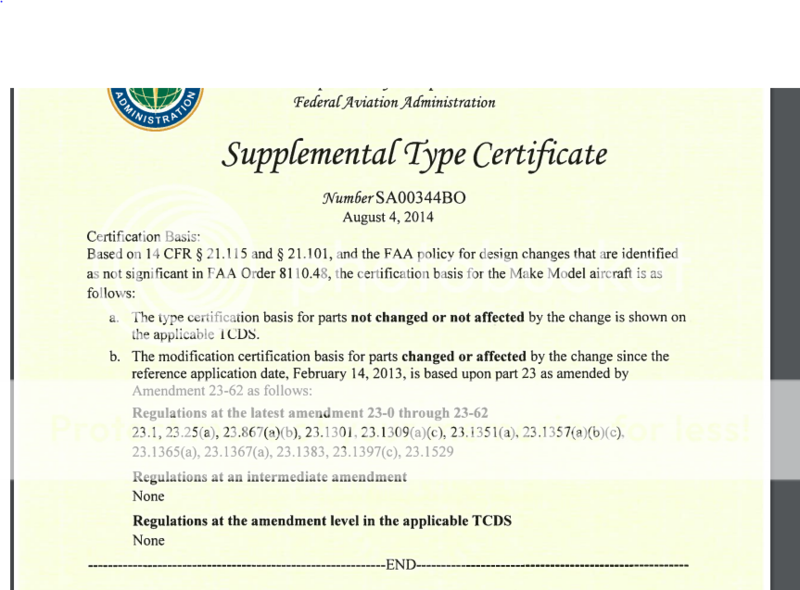bnt83
Final Approach
I see no connection between repair data and Certification requirements of new product. FAR 21&23. The forms you mentioned are used by DAR and FSDO to insure the data you are requesting to use is the proper method to do the repair.
Then you lack a fundemental understanding how airplanes and major repair and major alterations are approved. I'm not saying I know and understand it all because I don't.
But I do know that a Cesna 525C with a .5 inch painted band around the opening of an emergency exit would be unairworthy because the airplane was certified to part 23 Amemndements 23-1 through 23-57 (with a pile of extra stuff we won't get into).
The regulation the airplane must conform to is here (right from the TCDS and FARS):
Sec. 23.811
Emergency exit marking.
(a) Each emergency exit and external door in the passenger compartment must be externally marked and readily identifiable from outside the airplane by--
(1) A conspicuous visual identification scheme; and
(2) A permanent decal or placard on or adjacent to the emergency exit which shows the means of opening the emergency exit, including any special instructions, if applicable.
(b) In addition, for commuter category airplanes, these exits and doors must be internally marked with the word "exit" by a sign which has white letters 1 inch high on a red background 2 inches high, be self-illuminated or independently, internally-electrically illuminated, and have a minimum brightness of at least 160 microlamberts. The color may be reversed if the passenger compartment illumination is essentially the same.
[(c) In addition, when certification to the emergency exit provisions of Sec. 23.807(d)(4) is requested, the following apply:
(1) Each emergency exit, its means of access, and its means of opening, must be conspicuously marked;
(2) The identity and location of each emergency exit must be recognizable from a distance equal to the width of the cabin;
(3) Means must be provided to assist occupants in locating the emergency exits in conditions of dense smoke;
(4) The location of the operating handle and instructions for opening each emergency exit from inside the airplane must be shown by marking that is readable from a distance of 30 inches;
(5) Each passenger entry door operating handle must--
(i) Be self-illuminated with an initial brightness of at least 160 microlamberts; or
(ii) Be conspicuously located and well illuminated by the emergency lighting even in conditions of occupant crowding at the door;
(6) Each passenger entry door with a locking mechanism that is released by rotary motion of the handle must be marked--
(i) With a red arrow, with a shaft of at least three-fourths of an inch wide and a head twice the width of the shaft, extending along at least 70 degrees of arc at a radius approximately equal to three-fourths of the handle length;
(ii) So that the center line of the exit handle is within ± one inch of the projected point of the arrow when the handle has reached full travel and has released the locking mechanism; and
(iii) With the word "open" in red letters, one inch high, placed horizontally near the head of the arrow; and
(7) In addition to the requirements of paragraph (a) of this section, the external marking of each emergency exit must--
(i) Include a 2-inch colorband outlining the exit; and
(ii) Have a color contrast that is readily distinguishable from the surrounding fuselage surface. The contrast must be such that if the reflectance of the darker color is 15 percent or less, the reflectance of the lighter color must be at least 45 percent. "Reflectance" is the ratio of the luminous flux reflected by a body to the luminous flux it receives. When the reflectance of the darker color is greater than 15 percent, at least a 30 percent difference between its reflectance and the reflectance of the lighter color must be provided.]
Amdt. 23-46, Eff. 06/16/94
If repaint the airplane and this single aspect doesn't conform, the airplane is unairworthy.
Say this airplane was foreign registered and that county's TCDS showed that the airplane was certified in that country with a smoke detector in the baggage compartment and the airplane was imported to the USA and the FAA TCDS doesn't require that smoke detector, we can take it out. If we were exporting the airplane, a smoke detector must be installed.
Last edited:


